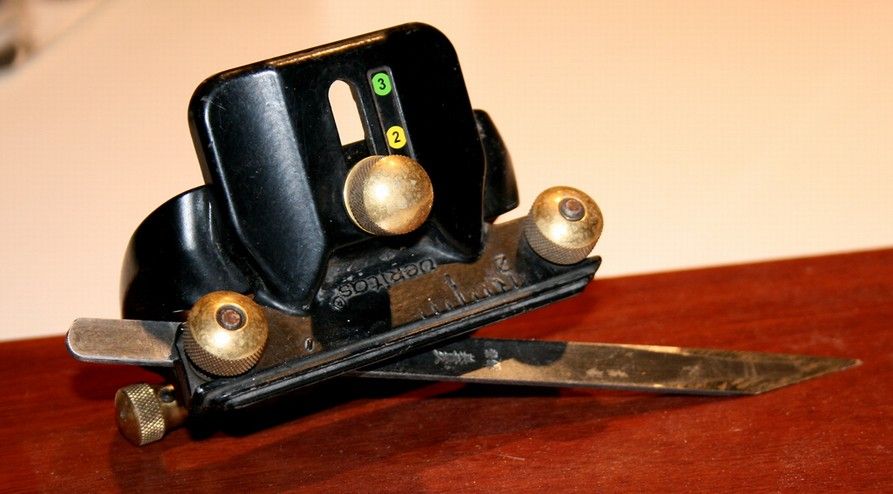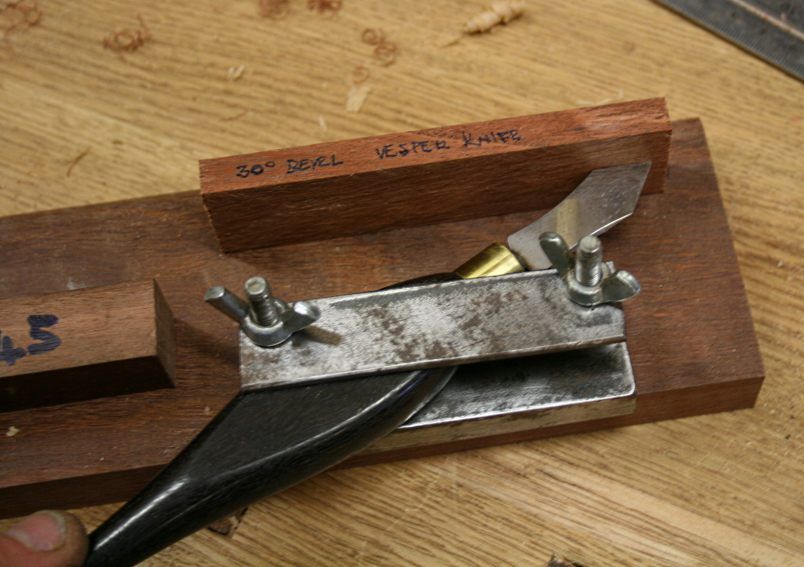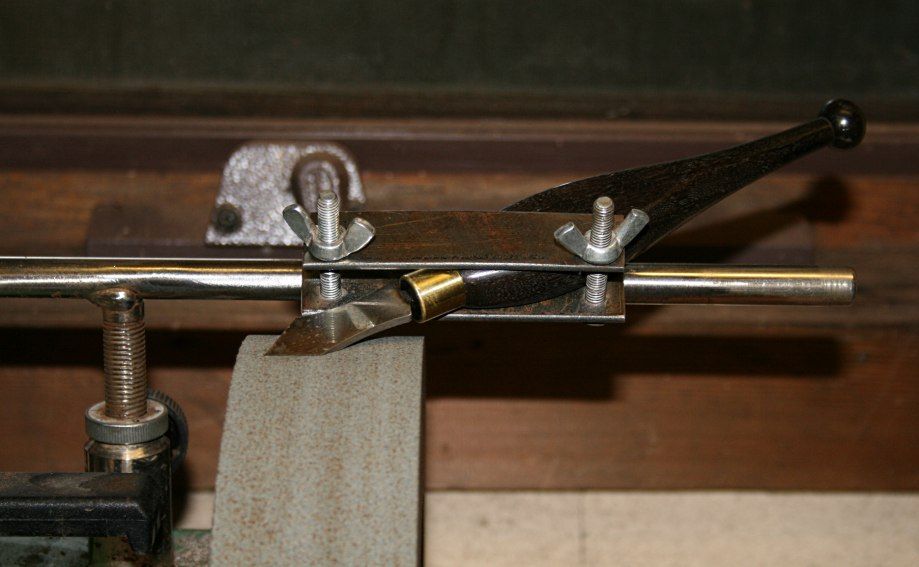Wondering if anybody has come across a honng guide to handle very high skew angles in fairly wide blades?
I've been playing with some marking knives of a similar pattern to the Japanese type but quite a bit larger, and needed to set them up with a 40 deg skew edge and a 25 deg bevel. I got them done on the Veritas Mk 2, but it's less than ideal in that the very high skew angle and the relatively long blade projection leaves the support roller offset miles from behind the cutting edge and mostly off the side of the waterstone.
Some sort of purpose made guide would be useful, one that places a (prefereably narrow) support roller on a line at 90 deg to the mid point of the cutting edge, and provides an adjustable bevel angle.




 Reply With Quote
Reply With Quote






